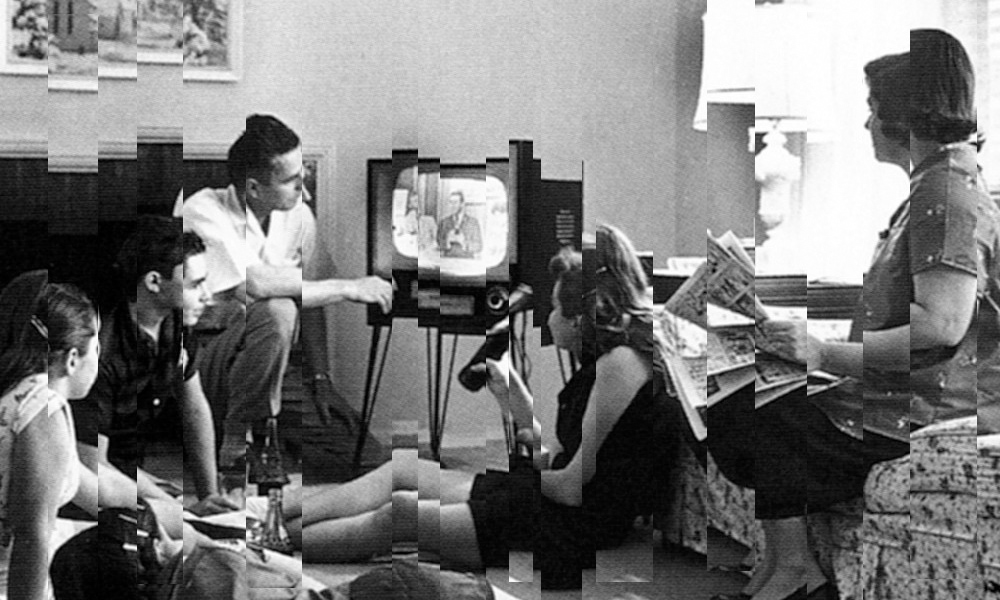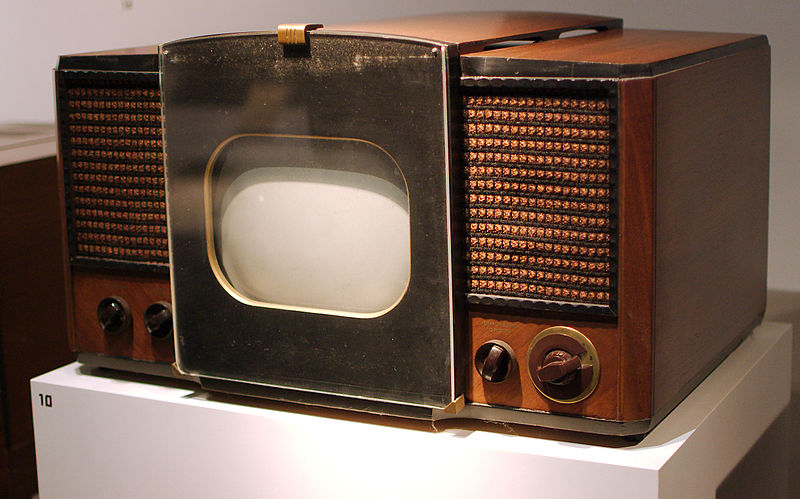
The 1950s, often romanticized in popular culture, was a decade far more complex and transformative than simple nostalgia suggests. It was a crucible where the nascent energies of the post-World War II world collided with burgeoning Cold War tensions, setting the stage for much of the latter half of the 20th century. This period, stretching from January 1, 1950, to December 31, 1959, witnessed profound shifts across geopolitics, economics, science, technology, and daily life, permanently reshaping the global landscape and domestic societies alike.
As nations grappled with the recovery from a devastating global conflict, new frontiers emerged, from the ideological battlegrounds of the Cold War to the literal expanse of space. Innovation wasn’t confined to laboratories; it entered living rooms in the form of television, a medium that would revolutionize communication and culture. Amidst this backdrop of grand narratives and technological marvels, the decade laid down the foundational layers for modern society, subtly influencing trends and pathways that would unfold in the decades to follow.
Join us on an in-depth exploration of the “Transformative Fifties,” as we unpack the defining shifts and pioneering moments that characterized this pivotal decade. We’ll examine the forces that shaped a world still reeling from war yet surging with new possibilities, paying particular attention to the groundbreaking developments that continued to reverberate through history.

1. **The Cold War’s Chilling Embrace**The 1950s marked a significant escalation of the Cold War, transforming it from its late-1940s origins into a heated global competition that would define the era. This ideological struggle between the communist Soviet Union and the capitalist United States dominated international relations, particularly in the Northern Hemisphere, shaping political alliances, economic policies, and cultural narratives across continents. The shadow of this geopolitical rivalry permeated nearly every aspect of life, driving policy decisions and fostering an atmosphere of pervasive tension.
Within the United States, this era was characterized by a fervent wave of anti-communist sentiment, notoriously known as the Second Red Scare or McCarthyism. This period saw congressional hearings across both houses of Congress, often fueled by fear and suspicion, targeting perceived communist sympathizers and subversives. The intense scrutiny and public accusations deeply affected American society, leading to blacklisting and political persecution, as the nation grappled with internal anxieties about infiltration and loyalty in the face of an existential threat.
Meanwhile, behind the Iron Curtain, the death of Joseph Stalin in 1953 ushered in a new chapter for the Soviet Union. His successor, Nikita Khrushchev, initiated a political campaign and reforms termed “de-Stalinization,” which aimed to dismantle the cult of personality and certain aspects of Stalin’s oppressive regime. While intended to liberalize the Soviet system, these changes also led to a deterioration of the relationship between the Soviet Union and China, revealing fissures within the communist bloc that would have long-term implications for global power dynamics and future conflicts. The competition also spurred significant military developments, including increased testing of nuclear weapons as part of the arms race, further heightening global anxieties.
This era of intense competition also led to the formation of military alliances, visually depicted on the world map of 1959, solidifying the division between the two superpowers and their respective blocs. The geopolitical landscape became a chessboard, with proxy conflicts and diplomatic maneuvering defining the interactions between nations, each side vying for influence and supremacy. The inherent tension of this rivalry underscored a politically conservative climate, as nations focused on internal stability and external defense against the perceived enemy.
The Cold War was not merely a political or military standoff; it was a battle for hearts and minds, influencing everything from foreign policy to educational curricula. It fundamentally restructured international relations, creating a bipolar world order that would persist for decades. The decisions made and the fears stoked during the 1950s would cast a long shadow, shaping subsequent global events and contributing to the complex tapestry of 20th-century history.

2. **A Boom Time: Post-War Economic Expansion and Consumerism**Following the devastation of World War II, the 1950s emerged as a period of remarkable global recovery, propelled by a sustained economic expansion that reshaped societies, particularly in industrialized nations. The United States, in particular, solidified its position as the world’s most influential economic power under the presidency of Dwight D. Eisenhower, providing significant aid through initiatives like the Marshall Plan which fueled post-war reconstruction in Europe. This era of prosperity fostered an environment ripe for growth, innovation, and an unprecedented surge in consumer culture.
One of the most striking demographic trends of the decade was the “baby boomer” generation, born out of increased birth rates that contributed to significant population growth, from 2.5 billion to 3.0 billion globally. This expansion, coupled with a strong economy and remarkably low unemployment rates, facilitated widespread prosperity and a burgeoning middle class. Affordable housing became more accessible, allowing young couples to establish homes earlier than ever before, marking a significant shift in societal norms and family structures.
The economic environment of the 1950s profoundly impacted social patterns, notably influencing marriage and family life. The median age of newlyweds declined to its lowest point during this decade, a level not seen since, with nearly half of American brides being teenagers by 1954. These young women often sought husbands who were stable providers, a role readily supported by the robust economy. This early marriage trend, combined with newfound economic stability, granted teenage brides notable purchasing power, making them a prime target for marketers eager to tap into the expanding consumer base.
Mass consumerism flourished as American households increasingly acquired products and upgraded their existing possessions, driven in part by the widespread adoption of new technologies like television. This era also saw the widespread popularity of credit cards, beginning with the Diners Club Card in New York, which soon expanded its reach to multiple countries. The ability to purchase goods on credit further fueled the consumer boom, fundamentally altering spending habits and the retail landscape, signaling a shift towards a more credit-dependent economy.
Despite these booms, the decade maintained moderate inflation, with an average annual rate of only 2.04% for the entire period. While the early months experienced a deflationary hangover from the 1940s and a brief flirtation with massive inflation (8-9%) in the first full year, inflation quickly subsided by 1952, remaining moderate for the rest of the decade, ranging from 1% to 3.7%. This economic stability provided a solid foundation for sustained growth, making the 1950s a benchmark for post-war prosperity and the entrenchment of a consumer-driven society.

3. **The Television Revolution: From Novelty to Household Staple**The 1950s heralded a profound shift in American domestic life with the rapid ascendance of television, transforming it from a nascent technology of the 1940s into a common, indispensable innovation in homes across the nation. This decade marked the “Golden Age of TV,” a period of remarkable growth and cultural integration where the glowing screen became the focal point of family entertainment and information. By the end of the 1950s, a significant majority of American households proudly owned a television set, signifying a cultural revolution in media consumption.
Early in the decade, between 1950 and 1952, there was an intense drive by manufacturers to produce larger screens, moving beyond the tiny displays characteristic of 1940s models. This focus on improving the viewing experience coincided with the expansion of broadcast capabilities. A landmark moment arrived on September 4, 1951, when President Harry S. Truman inaugurated transcontinental television service, delivering a speech from San Francisco that was simultaneously viewed from the west coast to the east coast, a technological feat that unified the nation through a shared media experience.
The growing popularity of television fueled mass consumerism, as families were eager not only to purchase TV sets but also to acquire other products and upgrade their homes to accommodate this new center of entertainment. This burgeoning market for goods, coupled with the influence of advertising on a captive audience, deeply intertwined television with the decade’s economic boom. While television quickly became commonplace in America, its widespread adoption in other countries would take several more decades, highlighting the unique trajectory of media development in the United States.
The programming landscape of the 1950s, the original Golden Age of Television, offered a blend of genres that captured the public’s imagination. Iconic shows like “I Love Lucy,” “The Adventures of Ozzie and Harriet,” and “Father Knows Best” were immensely popular, defining early sitcom formats and introducing characters that became household names. These programs not only entertained but also subtly shaped societal norms and aspirations, reflecting and influencing the cultural fabric of the era, and laying the groundwork for the diverse programming that would follow.
The physical form of television sets themselves evolved, with screens existing in various shapes, including round ones, during their infancy. This period of rapid ownership and technological refinement established television as a powerful cultural force, fundamentally altering how Americans received news, consumed entertainment, and engaged with the broader world. Its pervasive presence in homes created a shared national experience, forging connections and collective memories that continue to define the enduring legacy of the 1950s.

4. **The Space Race Ignites: Sputnik and NASA’s Genesis**The Cold War’s intensifying ideological battle found a new, awe-inspiring arena in the 1950s: outer space. What began as a scientific pursuit quickly transformed into the “Space Race,” a high-stakes competition between the United States and the Soviet Union to demonstrate technological superiority and national prestige. This new frontier captured the global imagination, fueling anxieties and aspirations in equal measure, and pushing the boundaries of human ingenuity to unprecedented levels.
A pivotal moment that officially ignited this cosmic contest occurred on October 4, 1957, when the Soviet Union successfully launched Sputnik 1. This 184-pound (83 kg) artificial satellite became the first ever to orbit the Earth, a stunning technological achievement that sent shockwaves across the globe, particularly in the United States. The sight of a Soviet satellite circling the planet challenged American perceptions of scientific and technological leadership, sparking a profound sense of urgency and determination to catch up and surpass their rival.
The launch of Sputnik 1 served as a potent catalyst for American action. Just four months later, the United States responded by launching its own, albeit smaller, satellite, marking its official entry into the Space Race. More significantly, in response to the perceived Soviet lead and the pressing need for a coordinated national space effort, the United States created the National Aeronautics and Space Administration (NASA) in 1958. This monumental decision consolidated various civilian and military space research programs under one agency, setting the stage for future lunar missions and deep space exploration.
The Space Race was more than a contest of rockets and satellites; it was a deeply symbolic struggle that mirrored the broader Cold War. Each launch, each scientific milestone, was interpreted as a direct measure of a nation’s technological prowess, economic strength, and even ideological superiority. The race spurred massive investments in scientific research, engineering, and education in both countries, transforming universities and industries as they mobilized to meet the demands of this ambitious undertaking.
Ultimately, the events of the late 1950s, particularly Sputnik 1 and the creation of NASA, laid the irreversible groundwork for an era of extraordinary human endeavor in space. The competition pushed both superpowers to innovate at an astonishing pace, leading to advancements that would not only propel humanity beyond Earth’s atmosphere but also yield countless technological spin-offs that would benefit everyday life. The echoes of this early space rivalry continue to resonate in our modern technological landscape, a testament to the transformative power of 1950s ambition.

5. **Unveiling Life’s Blueprint: DNA and Polio’s Defeat**The 1950s stand as a monumental decade for scientific discovery, particularly in the fields of medicine and biology, where breakthroughs fundamentally altered humanity’s understanding of life and our ability to combat disease. These advancements offered profound hope and demonstrated the immense power of scientific inquiry to address some of the most pressing challenges facing the world, from crippling illnesses to the very essence of genetic inheritance.
Perhaps the most celebrated scientific achievement of the decade was the discovery of the double-helix structure of DNA. In 1952, Francis Crick and James Watson made this groundbreaking revelation, a discovery to which Rosalind Franklin also significantly contributed. This unraveling of life’s fundamental blueprint provided a crucial understanding of how genetic information is stored, replicated, and passed down through generations. The double-helix model revolutionized genetics and biology, opening entirely new avenues for research into heredity, disease, and evolution, ultimately laying the foundation for modern molecular biology and biotechnology.
Parallel to this foundational biological discovery, the 1950s marked a turning point in public health with the successful development of the polio vaccine. In 1950, an immunization vaccine was produced for polio, a devastating disease that had caused widespread fear and paralysis, particularly among children. This was followed by Jonas Salk’s invention of a polio vaccine in 1955, which was subsequently administered to more than seven million American students. The widespread use of this poliovirus vaccine in the mid-1950s led to a rapid decline in the incidence of poliomyelitis in many industrialized countries, significantly reducing death rates from the disease and offering immense relief to families worldwide.
Beyond these two towering achievements, the decade saw other significant medical advancements. In 1951, the first human cervical cancer cells were successfully cultured outside a body from Henrietta Lacks, known as HeLa cells. These became the first and most commonly used immortalized cell line, proving invaluable for scientific research in virology, cancer, and genetics. Additionally, in 1952, the Apgar score, a critical scale for newborn viability, was invented by Virginia Apgar, providing a standardized method for assessing the health of infants immediately after birth.
These scientific and medical triumphs of the 1950s underscored a period of intense intellectual pursuit and collaboration, yielding results that had immediate practical applications and long-lasting theoretical implications. They not only saved lives and alleviated suffering but also provided humanity with unprecedented insights into its own biological makeup, forever changing the trajectory of medicine and science. The dedication of these researchers and the impact of their discoveries truly made the 1950s a golden age of scientific exploration and human betterment.

6. **The Micro-Revolution: Transistors, MOSFETs, and Beyond**The 1950s were a fertile ground for technological innovation, witnessing the maturation of some key inventions and the birth of others that would collectively lay the groundwork for the digital age. This era was characterized by a drive towards miniaturization, increased efficiency, and new methods of information processing, fundamentally transforming the electronics industry and impacting countless future applications. These advancements, though seemingly subtle at the time, were nothing short of revolutionary in their long-term implications.
At the dawn of the decade, the recently invented bipolar transistor, though initially quite feeble, held immense potential. Companies like GE, RCA, and Philco rapidly improved and developed this technology, recognizing its capacity to replace bulky vacuum tubes. The first commercial transistor production began in October 1951 at the Western Electric plant in Allentown, Pennsylvania, with the point contact germanium transistor. It wasn’t until around 1954, however, that transistor products began to achieve real commercial success, particularly with the advent of small portable radios that showcased the technology’s practicality and convenience, making electronics more accessible to the public.
A truly groundbreaking leap in semiconductor technology occurred towards the very end of the decade with the invention of the MOSFET (metal–oxide–semiconductor field-effect transistor), also known as the MOS transistor. Developed by Mohamed Atalla and Dawon Kahng at Bell Labs in November 1959, the MOSFET would prove to be a pivotal invention. It revolutionized the electronics industry, becoming the fundamental building block of what would later be known as the Digital Revolution. Its efficiency and scalability made it incredibly versatile.
The impact of the MOSFET cannot be overstated; it went on to become the most widely manufactured device in history, powering everything from microprocessors to memory chips in computers, smartphones, and countless other electronic devices. This single invention dramatically accelerated the miniaturization of electronics, enabling the development of integrated circuits and complex digital systems that define our modern technological landscape. It was a silent revolution, one that transformed the world from within the circuits of electronic devices.
Beyond transistors, the 1950s saw other significant technological strides. In 1953, Charles H. Townes built the Maser at Columbia University, a precursor to the laser, demonstrating the principle of stimulated emission. The world’s first nuclear power plant opened in Obninsk, near Moscow, in 1954, marking the dawn of nuclear energy. Furthermore, Bell Telephone Labs produced the first Solar battery in 1954, an early step towards harnessing renewable energy. These diverse innovations, from micro-components to power generation, highlight the decade as a period of intense and varied technological progress, laying critical foundations for the future.




